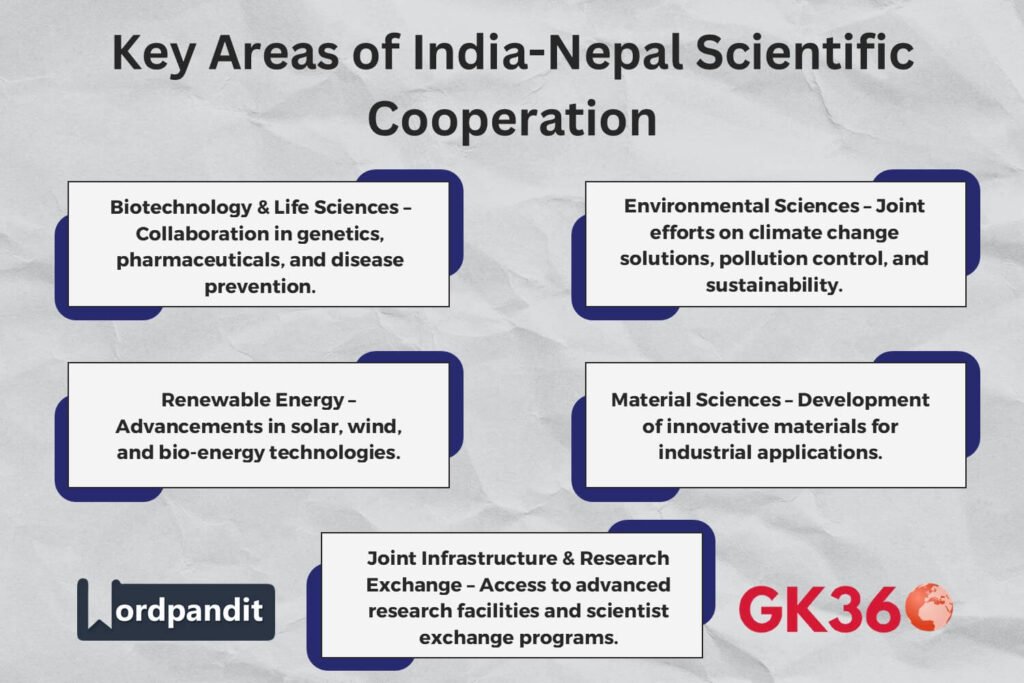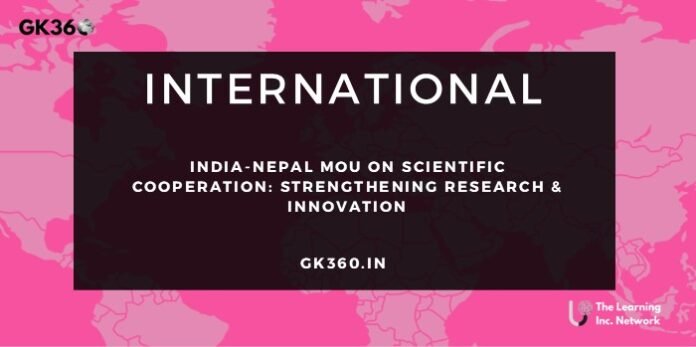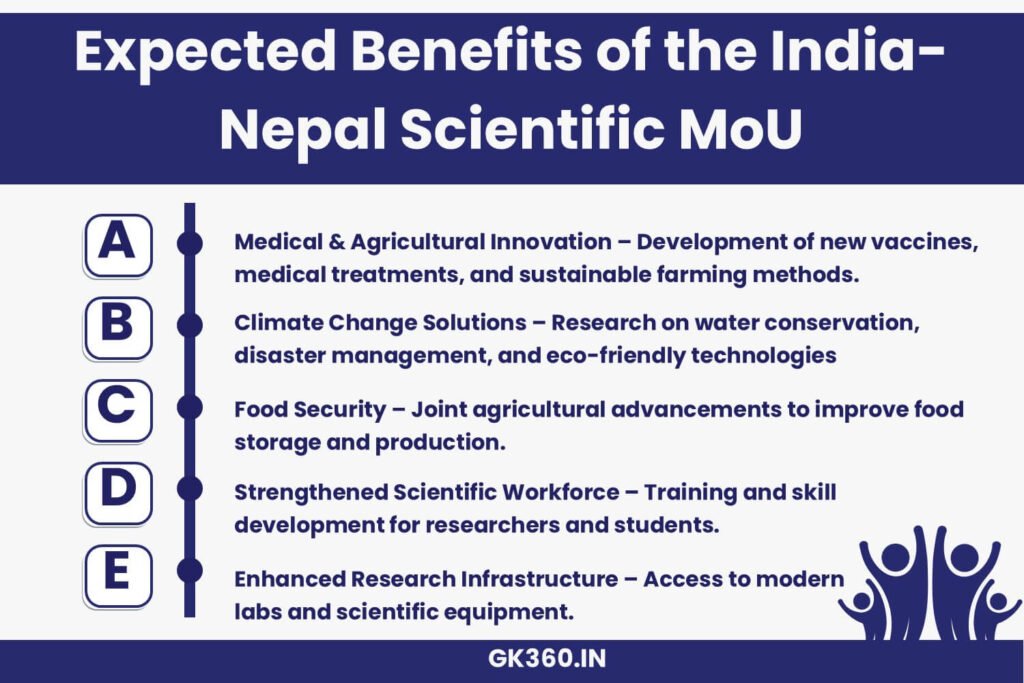India-Nepal MoU on Scientific Cooperation: Strengthening Research & Innovation

Table of Contents
- Introduction
- Historical Background of Indo-Nepal Scientific Relations
- Key Highlights of the 2025 MoU
- Fields of Cooperation
- Research Exchange Programs
- Joint Infrastructure Development
- Perspectives from Key Leaders
- Potential Benefits of the Agreement
- Challenges and Future Prospects
- FAQs on India-Nepal Scientific Cooperation
- Conclusion & Call-to-Action
Introduction
India and Nepal have taken a significant step in advancing their scientific and technological collaboration by signing a Memorandum of Understanding between the Council of Scientific and Industrial Research (CSIR) India and the Nepal Academy of Science and Technology (NAST). This agreement, signed on February 18, 2025, at the CSIR-National Physical Laboratory, New Delhi, aims to foster research and technological advancements across multiple fields, including biotechnology, environmental sciences, renewable energy, and material sciences.
This partnership builds on a history of scientific cooperation between the two nations, reflecting a shared commitment to innovation, knowledge exchange, and sustainable development. The MoU is expected to enhance joint research initiatives, scientist exchange programs, and access to advanced research infrastructure, benefiting both countries in the long run.
Historical Background of Indo-Nepal Scientific Relations
Scientific collaboration between India and Nepal dates back to 1994, when CSIR and NAST first signed an agreement to promote joint research projects and technological cooperation. Over the years, this relationship has strengthened through various initiatives, including training programs, workshops, and collaborative research efforts.
The new 2025 MoU builds upon these foundations, aiming to create long-term partnerships in innovation and development, benefiting scientists, researchers, and industries in both countries.
Key Highlights of the 2025 MoU
The CSIR-NAST agreement outlines a broad spectrum of scientific and technological collaborations, focusing on research-driven solutions and innovation.
Fields of Cooperation
The partnership will focus on the following key areas:
- Biotechnology & Life Sciences – Research in genetics, pharmaceuticals, and disease prevention.
- Environmental Sciences – Addressing climate change, pollution control, and sustainable development.
- Renewable Energy – Advancing solar, wind, and bio-energy technologies.
- Material Sciences – Development of new materials for industrial applications.
Research Exchange Programs
The MoU facilitates exchange programs for scientists and researchers from both countries, allowing them to:
- Work in advanced laboratories.
- Participate in joint research initiatives.
- Gain access to new research methodologies and technologies.
Joint Infrastructure Development
The agreement promotes shared access to research facilities between CSIR and NAST, ensuring efficient utilization of scientific infrastructure to enhance research output.
Perspectives from Key Leaders
CSIR’s View on the MoU
Dr. N. Kalaiselvi, Director General of CSIR, emphasized the importance of this agreement, stating:
“This MoU marks a new era of collaboration in science and technology between India and Nepal. By leveraging our collective expertise, we can drive meaningful research that benefits both nations and the global community.”
NAST’s Perspective
Prof. Dr. Dilip Subba, Vice-Chancellor of NAST, highlighted Nepal’s commitment to innovation, stating:
“Scientific cooperation is essential for progress. This agreement will ensure that Nepalese researchers can access advanced research facilities and collaborate on groundbreaking projects with Indian scientists.”
Potential Benefits of the Agreement
Advancements in Biotechnology
🔬 Research collaborations in biotechnology and genetics will help develop new medical treatments, vaccines, and sustainable agricultural practices.
Solutions for Climate Change
🌱 Scientists will work together on climate change adaptation, water conservation, and eco-friendly technologies, tackling environmental challenges affecting both nations.
Enhanced Food Security Research
🌾 Joint research in food preservation, agricultural innovation, and sustainable farming will enhance food security in both countries.
Challenges and Future Prospects
While the MoU presents numerous opportunities, several challenges need to be addressed:
- Funding Limitations – Ensuring sustained investment in scientific projects.
- Coordination Issues – Effective management of joint research projects across borders.
- Infrastructure Gaps – Upgrading research facilities to support large-scale projects.
The success of the agreement will depend on effective implementation, consistent funding, and strong leadership support from both governments.
FAQs on India-Nepal Scientific Cooperation
What is the purpose of the India-Nepal MoU on scientific cooperation?
🔹 The agreement aims to enhance research collaboration, share resources, and develop innovative solutions in biotechnology, energy, and environmental sciences.
How will this partnership benefit scientists?
🔹 Scientists from both countries will gain access to advanced laboratories, exchange programs, and collaborative research projects.
Which institutions are involved in this agreement?
🔹 The Council of Scientific and Industrial Research (CSIR), India, and the Nepal Academy of Science and Technology (NAST) are the key stakeholders.
What are the long-term goals of the partnership?
🔹 The collaboration aims to develop cutting-edge research, tackle climate change challenges, and enhance food security and sustainable energy solutions.
How can students and researchers participate?
🔹 Interested students and researchers can apply for exchange programs and joint research projects through CSIR and NAST.
Conclusion & Call-to-Action
The India-Nepal MoU on Scientific Cooperation marks a major milestone in strengthening bilateral research collaborations. By focusing on biotechnology, environmental sciences, alternative energy, and material sciences, the agreement is set to drive technological advancements and sustainable solutions.
With strong leadership support, well-structured plans, and timely execution, this initiative will play a crucial role in shaping the future of scientific progress for both nations.
Key Takeaways Table
| Aspect | Details |
|---|---|
| Institutions Involved | CSIR (India) & NAST (Nepal) |
| Key Focus Areas | Biotechnology, Environmental Sciences, Renewable Energy, Material Sciences |
| Main Objectives | Joint research, scientist exchange, infrastructure sharing |
| Expected Benefits | Advancements in healthcare, climate resilience, food security, and scientific innovation |
| Challenges Identified | Funding limitations, coordination issues, infrastructure gaps |
| Long-Term Goals | Sustainable scientific collaboration, regional innovation, and global impact |
Related Terms:
- India-Nepal Scientific Cooperation
- CSIR-NAST MoU 2025
- India Nepal Research Collaboration
- Biotechnology and Life Sciences Research
- Environmental Science Innovations
- Renewable Energy Partnership
- Material Sciences Development
- India Nepal Scientist Exchange
- Climate Change Solutions South Asia
- Food Security Research India Nepal






